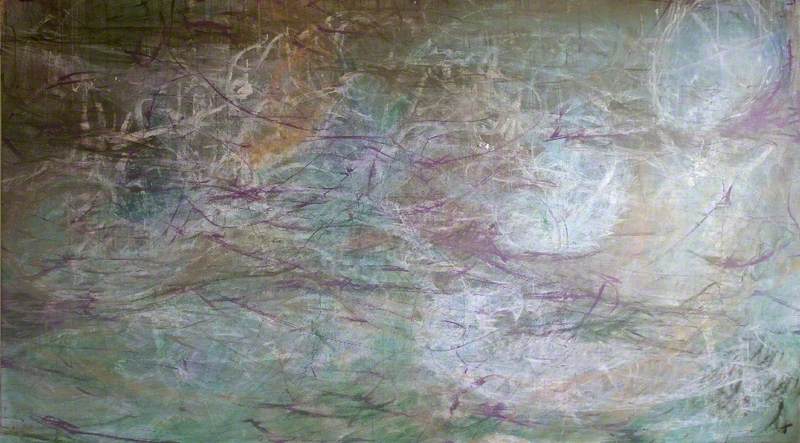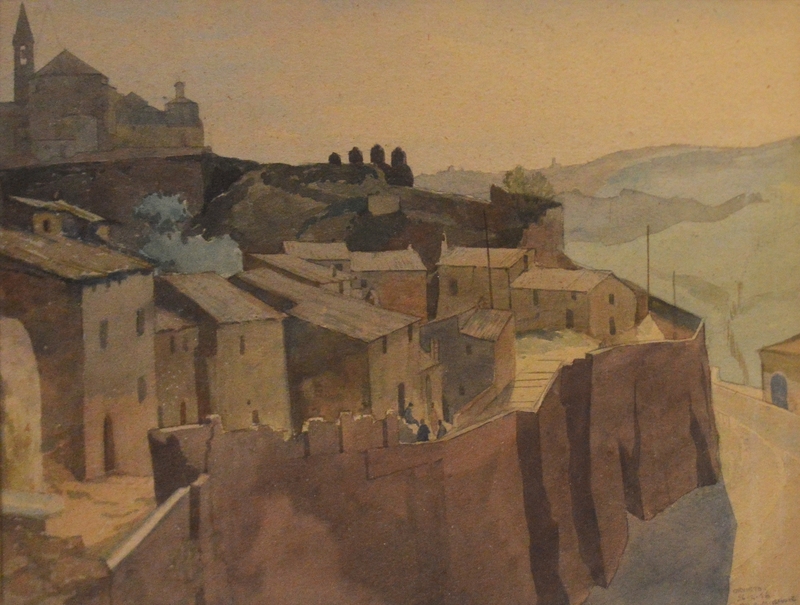Following the outbreak of the First World War, the British government began to recruit volunteers to sign up for the army. Far outnumbered by European forces such as France and Germany, who had up to 70 divisions, the government commenced an all-guns-blazing recruitment campaign. Signing up to fight was voluntary from 1914 - 1915, and it was up to the Parliamentary Recruiting Committee (PRC) to make the war appear desirable. Scroll through the exhibition to discover the art of Highland military recruitment.
The Highlanders’ Museum has a fascinating selection of military recruitment posters, all of which are available to purchase as prints in the Art UK shop - just click on an image, and select 'Buy Artwork Reproduction'.
-
Recruiting Poster: The Queen's Own Highlanders
Recruiting Poster: The Queen's Own Highlanders 1961–1964Scotland produced more WWI volunteers than anywhere else in the UK. It is estimated that approximately 190,000 Scots volunteered to assist the war effort (before conscription was introduced in 1916). Alongside its economic situation and a strong sense of national identity, this was also due to a compelling military recruitment campaign.
Brightly coloured and often showing team sports, traditional highland dress, and soldiers smiling amongst comrades, recruitment posters were distributed across the country. It was common for posters to focus on themes of gallantry, guilt, and patriotism, and also to enforce the idea of missing out.
unknown artist
Lithograph on paper
H 62 x W 43 cm
The Highlanders' Museum
-
Recruiting Poster: Join the Seaforth Highlanders
Recruiting Poster: Join the Seaforth HighlandersThis recruitment poster for the Seaforth Highlanders was designed by artist Tom Curr. It focuses on drawing parallels between team sports and the comradery of the army. It also highlights the need for good physical fitness, which was essential for early WWI volunteers - almost 40% of the volunteers in 1914 were rejected for medical reasons.
Tom Curr (1887–1958)
Colour lithograph on paper
H 74 x W 48.3 cm
The Highlanders' Museum
-
Lord Kitchener (1850–1916)
Lord Kitchener (1850–1916)Lord Kitchener (1850–1916)
Although not a painting from The Highlanders' Museum collection, this exquisite portrait shows 1st Earl Horatio Herbert Kitchener, also known as Lord Kitchener, who was responsible for driving military recruitment during his tenure as Secretary of State for War from 1914.
His image was included on numerous recruitment posters and became widely recognised across the country - one of the most successful posters of the campaign featured the slogan ‘Your country needs you’, alongside a finger-pointing Kitchener and his distinctive handlebar moustache.
unknown artist
Oil
H 60 x W 45 cm
Dereham Town Council
-
Recruiting Poster: The Queen's Own Cameron Highlanders
Recruiting Poster: The Queen's Own Cameron HighlandersThis more traditional recruitment poster focuses on Scottish patriotism to draw in volunteers. Detailing the breadth of military roles in Highland regiments, we see the Highland soldier also as a piper, drummer, and sportsman.
The soldier second in from the left shows the uniform assigned to Highland soldiers to wear during front line combat, replacing the glengarry for a metal helmet, removing the sporran in place of a kilt apron, and swapping full length hose and tartan hose-tops for plain hose without flashes. This would have been for both practical and economic reasons.
Tom Curr (1887–1958)
Lithograph on paper
H 74 x W 49 cm
The Highlanders' Museum
-
Recruiting Poster: Seaforth Highlanders, Ross-Shire Buffs, The Duke of Albany's
Recruiting Poster: Seaforth Highlanders, Ross-Shire Buffs, The Duke of Albany'sThis nineteenth-century recruitment poster draws attention to the gallantry of fighting for Scotland. The central image shows a Scottish soldier using a bayonet against an Afghan troop during the Second Anglo-Afghan War of 1879.
Notice that the soldiers are all depicted in tartan trews or kilts: despite the traditional draw of kilts, which were worn by many Scottish soldiers, they had severe disadvantages in the trenches WWI : they often harboured lice in the folds, and during particularly wet and muddy conditions the heavy wool rarely dried out. Nonetheless, the kilt and hose meant Highland soldiers were less likely to suffer from trench foot.
unknown artist
Colour lithograph on paper
H 56 x W 41 cm
The Highlanders' Museum
-
Recruiting Poster: Cameron Highlanders
Recruiting Poster: Cameron HighlandersThis recruitment poster for The Queen's Own Cameron Highlanders uses vibrant plains of colour and concise imagery to invoke feelings of pride and respect.
Designed by renowned painter and muralist Ian Eadie, this poster would have been produced to invoke nationalism ahead of WWII.
Ian Eadie (1913–1973)
Lithograph on paper
H 75 x W 50 cm
The Highlanders' Museum
-
Recruiting Poster: Seaforth Highlanders, Ross-Shire Buffs, The Duke of Albany's
Recruiting Poster: Seaforth Highlanders, Ross-Shire Buffs, The Duke of Albany'sA more informative recruitment poster, this example asks for "a few smart respectable young men" to join the The Duke of Albany's Seaforth Highlanders Ross-shire Buffs. This poster would have been for the general encouragement of young men to join the army, rather than to recruit for a particular war. The poster details the commitment and reward of joining the Seaforths.
unknown artist
Lithograph on paper
H 87 x W 57 cm
The Highlanders' Museum
-
Recruiting Poster: Join the Seaforth Highlanders
Recruiting Poster: Join the Seaforth Highlanders"Join the Seaforth Highlanders!" Drawing on Scottish tradition through dress and sport, this image shows the ideal Highland soldier as something for young men to aspire to.
The Scottish hammer throw is a traditional sport dating as far back as the ancient Teutonic tribes of the late 2nd century BC. It has evolved into a symbol of Scottish sportsmanship, requiring strength, power, and skill, as featured in The Highland Games.
Tom Curr (1887–1958)
Colour lithograph on paper
H 76 x W 47 cm
The Highlanders' Museum
-
Recruiting Poster: The Seaforth Highlanders: 150 Years of Change
Recruiting Poster: The Seaforth Highlanders: 150 Years of Change 1928 (?)Demonstrating the progression of the Highland soldier's uniform from the regiment's formation in 1778, to 1878, and finally to 1928, this poster draws on the Seaforth Highlanders' Motto: Cuidch'N Righ (meaning 'Help the King' in Gaelic).
The central soldier shows what the Seaforths would have worn throughout WWI and into WWII in 1939.
unknown artist
Colour lithograph on paper
H 75 x W 50 cm
The Highlanders' Museum











